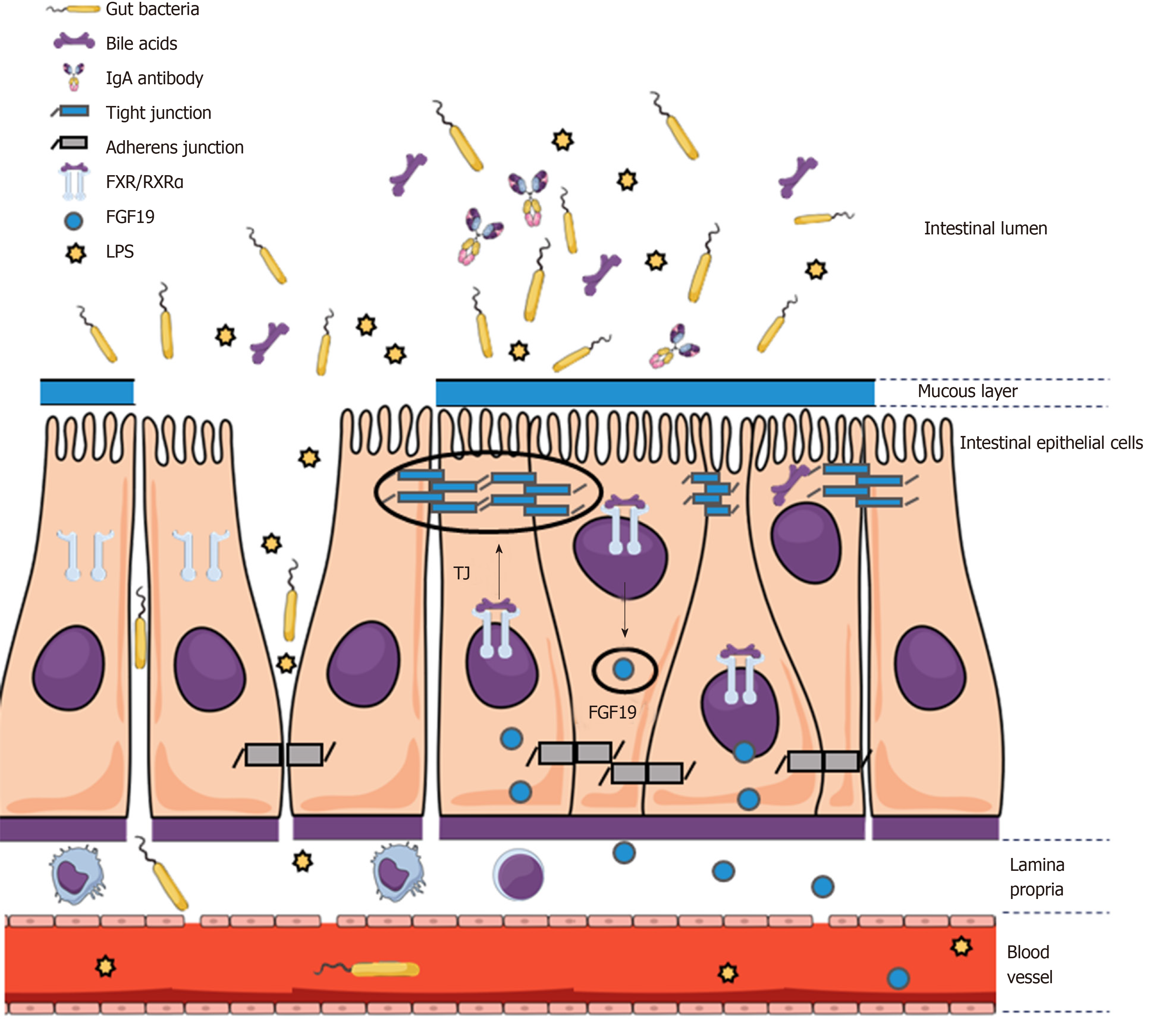Copyright
©The Author(s) 2019.
World J Gastroenterol. Oct 21, 2019; 25(39): 5897-5917
Published online Oct 21, 2019. doi: 10.3748/wjg.v25.i39.5897
Published online Oct 21, 2019. doi: 10.3748/wjg.v25.i39.5897
Figure 2 An impaired mucosal epithelial barrier integrity facilitates bacterial translocation and is regulated by farnesoid X receptor-dependent mechanisms.
Increased systemic inflammation in cirrhotic patients as compared to healthy subjects is considered to be associated with intestinal dysbiosis leading to translocation of pathogens- or derived pathogen-associated molecular patterns and danger-associated molecular patterns into the portal circulation, which is further facilitated by an impaired intestinal barrier. Farnesoid X receptor (FXR) activation in ileum enhances the expression of fibroblast growth factor 15 (mice) or 19 (humans) via binding to response elements in the nucleus. FXR activation leads to upregulation of tight junction proteins and decrease of bacterial translocation. FXR: Farnesoid X receptor; IgA: Immunoglobulin A; RXRα: Retinoid X receptor; FGF: Fibroblast growth factor; LPS: Lipopolysaccharide; TJ: Tight junction.
- Citation: Simbrunner B, Mandorfer M, Trauner M, Reiberger T. Gut-liver axis signaling in portal hypertension. World J Gastroenterol 2019; 25(39): 5897-5917
- URL: https://www.wjgnet.com/1007-9327/full/v25/i39/5897.htm
- DOI: https://dx.doi.org/10.3748/wjg.v25.i39.5897









